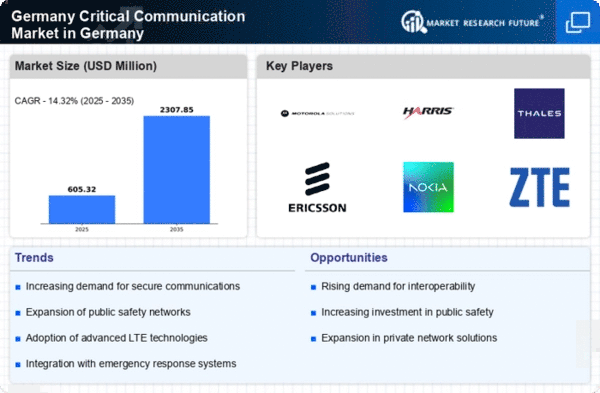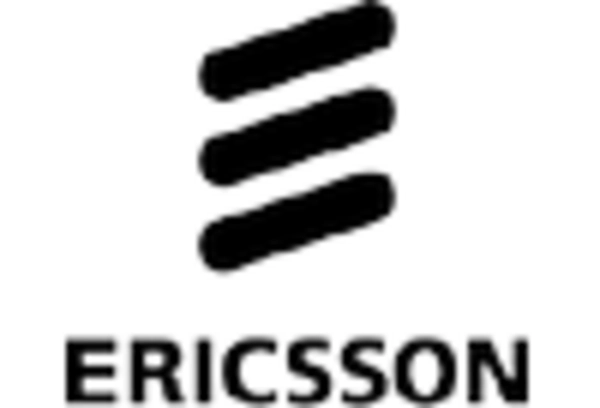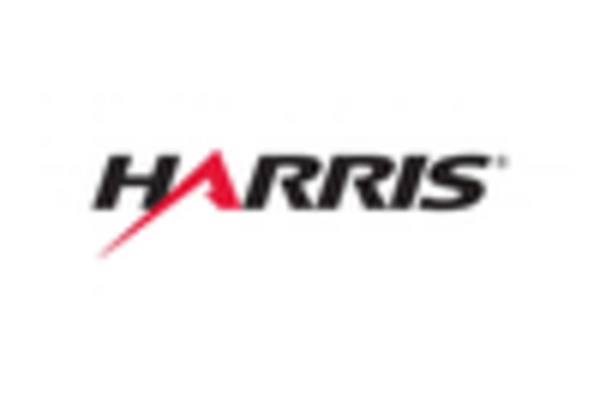Collaboration Among Stakeholders
Collaboration among various stakeholders is emerging as a key driver in the lte critical-communication market in Germany. Partnerships between government agencies, private sector companies, and technology providers are fostering innovation and enhancing the development of communication solutions. These collaborations aim to create interoperable systems that can function seamlessly across different platforms, which is crucial for effective emergency response. In 2025, it is expected that joint initiatives will lead to the establishment of standardized protocols, thereby improving the overall efficiency of communication networks. This collaborative approach not only accelerates the deployment of advanced technologies but also strengthens the resilience of the lte critical-communication market, ensuring that it meets the evolving needs of public safety and emergency services.
Increased Focus on Cybersecurity
As the lte critical-communication market in Germany expands, there is an increasing focus on cybersecurity measures. The rise in cyber threats poses significant risks to communication systems, particularly those used in critical sectors such as public safety and emergency services. In response, stakeholders are investing in advanced security protocols to safeguard sensitive data and ensure the integrity of communication networks. By 2025, it is projected that investments in cybersecurity solutions within the lte critical-communication market will reach approximately €200 million. This emphasis on cybersecurity not only protects communication systems from potential breaches but also instills confidence among users, thereby driving further adoption of LTE technologies in critical applications.
Government Initiatives and Funding
Government initiatives play a pivotal role in shaping the lte critical-communication market in Germany. The federal government has recognized the importance of enhancing communication infrastructure for public safety and emergency response. In recent years, substantial funding has been allocated to improve network capabilities, with investments exceeding €500 million aimed at upgrading existing systems. These initiatives are designed to ensure that emergency services have access to advanced communication tools, which are crucial during crises. Furthermore, the government's commitment to fostering innovation in communication technologies suggests a long-term strategy to bolster the lte critical-communication market. This proactive approach not only enhances operational efficiency but also ensures that critical services are well-equipped to handle emergencies.
Growing Demand for Reliable Communication
The Critical Communication Market in Germany in Germany is experiencing a notable surge in demand for reliable communication systems. This demand is primarily driven by the increasing need for uninterrupted communication in emergency services, public safety, and critical infrastructure sectors. As urbanization continues to rise, the necessity for robust communication networks becomes more pronounced. In 2025, the market is projected to grow at a CAGR of approximately 15%, reflecting the urgency for dependable communication solutions. The integration of LTE technology enhances the ability to transmit data swiftly and securely, which is essential for first responders and other critical services. This growing demand indicates a shift towards prioritizing communication reliability, thereby propelling the lte critical-communication market forward.
Technological Advancements in Communication
Technological advancements are significantly influencing the lte critical-communication market in Germany. Innovations such as the development of 5G technology and enhanced LTE features are expected to revolutionize communication capabilities for emergency services. These advancements facilitate faster data transmission, improved coverage, and enhanced security features, which are essential for critical communication. In 2025, it is anticipated that the integration of AI and IoT technologies will further optimize communication systems, allowing for real-time data sharing and situational awareness. This evolution in technology not only enhances the efficiency of emergency response but also positions the lte critical-communication market as a leader in adopting cutting-edge solutions. The continuous evolution of technology indicates a promising future for the market.

















Leave a Comment